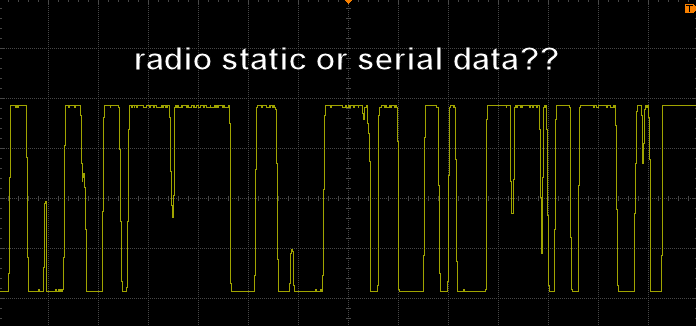In order to support multiple senders on the same frequency (433 MHz), they must cooperate with each other by keeping their transmitters turned off except when they need to send a message. Therefore, most of the time, all of the transmitters are turned off.
When all of the transmitters are turned off, this is what the listener hears:

Have you ever tuned your radio to a frequency that doesn't have a station broadcasting on it? What do you hear? Silence? Nope. Static!
The listener is hearing static most of the time. How is it supposed to differentiate between noise and signal? Certainly a checksum in the data helps, but if the receive port starts reading a couple of bits too early (because the static looked like the start of a byte), then the entire message will be lost because the listener bit stream is out of phase with the sender bit stream.
Some people send a series of letter 'U' characters (repeating bit pattern) and hope that the listener syncs up. However, a better choice is to fully enable the transmitter for at least 10 bits (1 start + 8 data + 1 stop). This provides the following benefits:
- The listener can differentiate a long high period from static, since static often has low bits
- The first low bit after the long high signal is a serial start bit, thus synchronizing the bit streams
- The listener doesn't need to throw away any bytes (like 'U')
* Most importantly, the receiver hardware turns down the auto-gain (volume), just like you would turn down the volume when you hit a loud station. Thus, the static is quieted.

The above oscilloscope trace comes directly from the receiver hardware -- not the microcontroller. Look how clean the data signal is. This demonstrates that the $1 eBay 433 MHz transmitter/receiver is actually quite capable.
An interesting phenomenon of the receiver hardware auto-gain is that static is not heard by the listener for some time even after the transmitter has turned off again (see below). But, eventually it creeps back as the receiver turns up the volume again to hear fainter messages.

Fortunately, you don't have to worry about any of this, as LoFi is preprogrammed to handle it. You just need to find fascinating things in your house to wire up!
 David Cook
David Cook
Discussions
Become a Hackaday.io Member
Create an account to leave a comment. Already have an account? Log In.